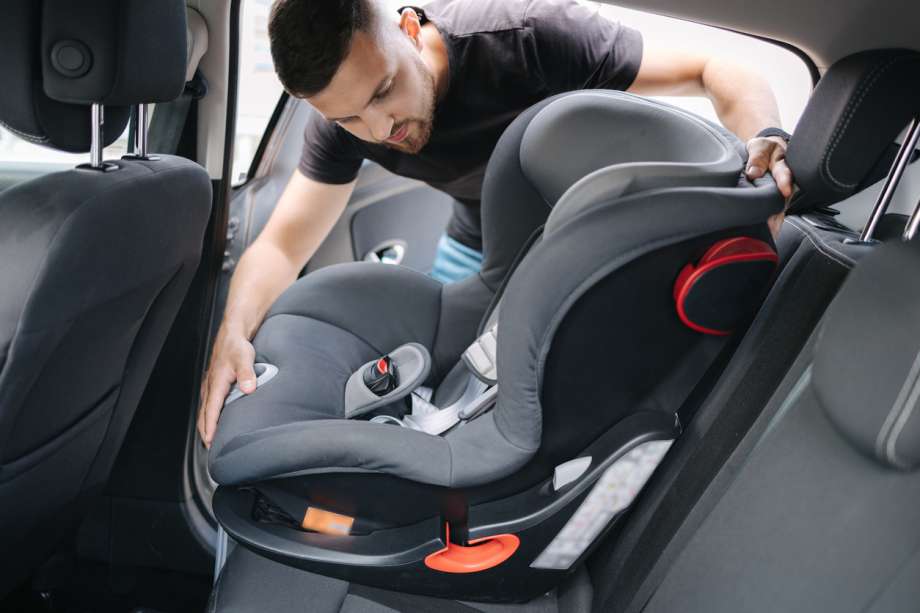Your Baby's First Car Seat

Your Baby's First Car Seat
Although parents often take their kids out of a car seat and start using regular seat belts well before the recommended age of eight years or weight of 80 pounds, putting a baby in a car seat is a no-brainer, even for first-time fathers.
Shopping for a car seat, with so many different brands and types available, can be overwhelming. There are different basic guidelines to follow depending on the car you drive and the type of seat you're looking for. Remember, as the American Academy of Pediatrics states, there is no "safest" or "best" car seat. You will find many brands and styles of seats that fit the guidelines, so in the end your choice will come down to personal preference. Just be sure to read the manufacturer's instructions so that you install and use the seat correctly.
E Fact
Car seats have always been hard to use, and most experts estimate that 85 percent of parents use them incorrectly. LATCH (Lower Anchors and Tethers for Children) is a new system that is installed in newer cars and car seats to make them much easier to install and use.
Infant-Only Carriers
Your first car seat will probably be an infant-only seat. This seat is designed for young infants and the rear-facing position that is safest for them. One of the best features of an infant-only seat is that after installing a detachable base into the back seat of your car, you can just snap the seat into the base when you are ready to go. When you reach your destination, detach the seat and use it as a carrier to transport your baby. Without this type of seat, you will have to buy a separate carrier, use a sling, or simply carry your baby around in your arms.
Most infant seats can only be used for babies that weigh less than 20 pounds. If you use an infant seat and your baby reaches 20 pounds before his first birthday, then you will have to get a convertible seat and use it in the rear-facing position for a while.
Convertible Car Seats
This type of seat is "convertible" because it can be used in both the rear-facing and forward-facing positions, accommodating newborns, infants, and most toddlers. These seats can be used until a child weighs about 40 pounds. There are even some with higher weight limits that can be used as a belt-positioning booster seat for children up to 65-80 pounds. While this means that you might be able to use just one car seat until your child is three years old (and therefore buy only one), a convertible seat might not fit your newborn well and it can't be used as a carrier.
E Alert
Although you can apply to get permission to turn your air bag off or install an air bag on-off switch, your baby would still be safer in the back seat of a car. Try to make other arrangements (such as using another vehicle to travel in with your baby), and consider turning off your air bag only as a last resort.
Car Seat Positioning
Where exactly to put the car seat is another common source of confusion. Most dads know that the back seat is safest, but where in the back seat? Should you put your baby behind the driver or passenger, or in the middle?
Although it sometimes depends on how many other kids you have seated in the car and where the seat fits best, in almost all cases your baby will be safest in the middle of the back seat. In addition to keeping him away from side-impact collisions, it protects him from any danger from side air bags. Whichever seat you choose, remember to place your baby in the rear-facing position until he weighs 20 pounds and is twelve months old.
Alternative Arrangements
Rear-facing car seats cannot be used in a seat with an air bag. Since your younger child must be seated rear-facing in the car, you will have to make other arrangements if your car or truck doesn't have a back seat.
One alternative is to turn off your passenger-side air bag when you have your baby in the car. The National Highway Traffic Safety Administration (NHTSA) has a form that you can use to request an air bag on-off switch if you have an infant who must ride in the front seat. You can learn more about air bag on-off switches and download a copy of the request form at the air bag section of the NHTSA's Web site (wwww.nhtsa.gov).